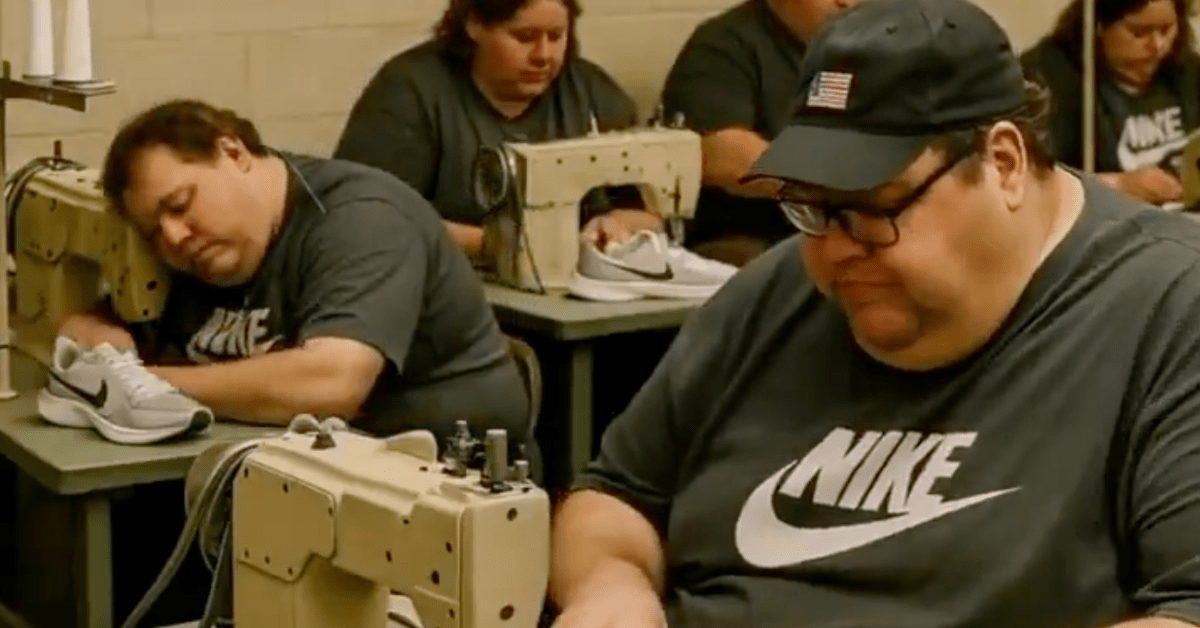China's Manufacturing Laugh: Why US Jobs Aren't Moving Back
The narrative of reshoring—American manufacturing jobs returning from overseas—has been a persistent theme in political discourse and economic analysis. While there's been some movement, the reality is far more nuanced than a simple reversal of globalization. China's manufacturing dominance isn't simply fading away; it's adapting, and understanding this adaptation is key to grasping why the anticipated flood of jobs back to the US hasn't materialized.
The Allure of China's Manufacturing Ecosystem
For decades, China offered an irresistible combination of factors that attracted manufacturers globally, including the US. These advantages weren't solely about low labor costs, although that certainly played a significant role. The real power lay in the synergistic ecosystem that developed:
- Complete Supply Chains: China cultivated a dense network of suppliers, manufacturers, and distributors, creating a highly efficient and cost-effective ecosystem. Finding all the necessary components and services in close proximity significantly reduced lead times and transportation costs. This intricate web is difficult, if not impossible, to replicate quickly elsewhere.
- Massive Infrastructure: China invested heavily in infrastructure—ports, roads, railways—supporting seamless logistics and distribution. This robust infrastructure provides a competitive advantage that isn't easily replicated.
- Skilled Workforce (at scale): While labor costs have risen, China still possesses a vast and relatively skilled workforce, particularly in specific manufacturing sectors. The sheer scale of this workforce continues to be a powerful draw for businesses.
- Government Support & Subsidies: Targeted government policies, subsidies, and tax incentives have consistently supported the growth of China's manufacturing sector. This proactive government involvement provides a significant advantage over many other countries.
The Myth of Simple Reshoring
The belief that simply moving production back to the US would solve economic woes ignores the complexities involved. The cost advantages of China's mature ecosystem aren't easily overcome. While labor costs in the US are higher, the overall cost of production, considering factors like supply chain efficiency, transportation, and infrastructure, often remains lower in China.
Beyond Low Labor Costs: China's Evolving Strategy
China isn't merely relying on low labor costs. It's actively upgrading its manufacturing capabilities:
- Automation & Robotics: China is investing heavily in automation and robotics to offset rising labor costs and improve efficiency. This technological advancement allows them to maintain competitiveness even with increased wages.
- Technological Innovation: China is focusing on developing higher-value-added manufacturing, moving beyond simple assembly to incorporate advanced technologies and innovation. This shift aims to capture a larger share of the global value chain.
- Focus on Domestic Consumption: China's burgeoning domestic market provides a strong base for its manufacturers, reducing reliance on exports and building resilience against external shocks.
The Reality of "Reshoring"
While some companies have indeed moved some production back to the US, it's often a strategic repositioning rather than a wholesale return. This often involves:
- Nearshoring: Relocating production to countries closer to the US (like Mexico or Canada), reducing transportation costs and lead times without fully returning to the US.
- Focus on High-Value Manufacturing: Bringing back only specific high-value-added manufacturing processes that require specialized skills or technology, while leaving lower-value tasks in China.
- Strategic Diversification: Companies are diversifying their manufacturing locations to mitigate risks associated with relying on a single country.
The Future of US-China Manufacturing
The idea of a simple reversal of manufacturing trends is unrealistic. China's integrated manufacturing ecosystem and strategic investments in technology and infrastructure represent a formidable challenge. The future likely involves a more complex and geographically dispersed manufacturing landscape, with companies strategically balancing costs, efficiency, and risk mitigation.
The US needs to focus on:
- Investing in Infrastructure and Education: Improving infrastructure and investing in education and training to develop a skilled workforce are crucial steps in making the US more competitive.
- Targeted Government Policies: Smart government policies and incentives can help attract high-value manufacturing and encourage domestic investment.
- Technological Innovation: Investing in research and development to stay at the forefront of technological advancements is essential for long-term competitiveness.
In conclusion, China's manufacturing strength isn't just about low wages; it's a complex ecosystem built over decades. Understanding this reality is critical for developing effective strategies to enhance US competitiveness in the global manufacturing landscape. The "reshoring" narrative needs a more nuanced understanding, moving beyond simplistic solutions and embracing a strategic approach to long-term competitiveness.
